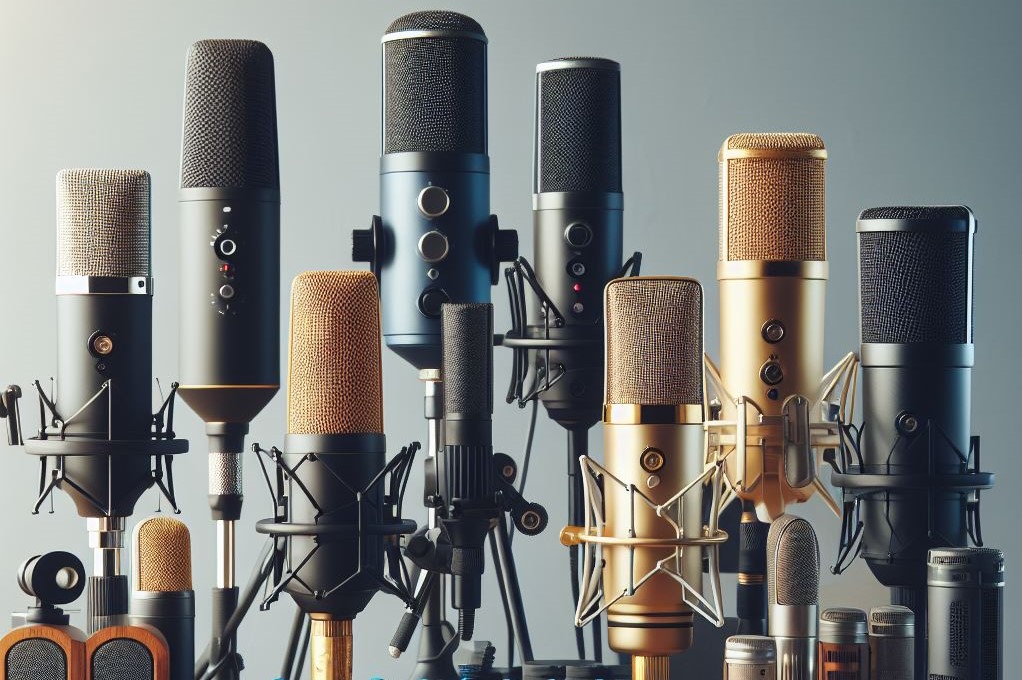
Recording acoustic guitar can be a truly enriching experience, as it allows you to capture the nuanced tones and intricate melodies of this beautiful instrument. However, to ensure that your recordings truly do justice to the acoustic guitar’s sound, it’s essential to choose the right microphone and employ effective recording techniques.
Here’s a little transparency: Our website contains affiliate links. This means if you click and make a purchase, we may receive a small commission. Don’t worry, there’s no extra cost to you. It’s a simple way you can support our mission to bring you quality content.
In this comprehensive guide, we’ll delve into the world of acoustic guitar microphones, exploring various options and techniques to help you achieve the perfect recording.
Understanding Microphone Types:
Microphones come in a variety of types, each with its own unique characteristics and applications. When it comes to recording acoustic guitar, the two main types of microphones you’ll encounter are condenser and dynamic microphones.
Condenser Microphones:
Condenser microphones are known for their sensitivity and ability to capture intricate details of sound. They’re particularly well-suited for recording acoustic instruments due to their ability to faithfully reproduce the nuances of performance.
Here are some popular condenser microphone options:
Neumann KM 184:
Renowned for its transparent sound and exceptional detail, the Neumann KM 184 is a favorite among recording engineers for capturing the subtle nuances of acoustic guitar playing.
Audio-Technica AT2020: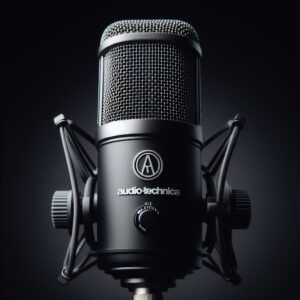
Offering a perfect balance of affordability and quality, the AT2020 is a versatile condenser microphone that excels in capturing the warmth and clarity of acoustic instruments.
Rode NT1-A: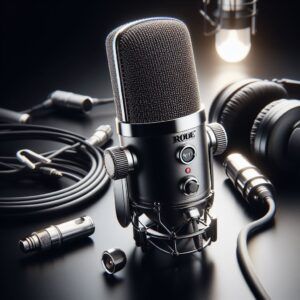
With its low self-noise and smooth frequency response, the Rode NT1-A is widely favored for its ability to capture the rich harmonics and dynamics of acoustic guitar performances.
Dynamic Microphones:
Dynamic microphones are known for their durability and ability to handle high sound pressure levels, making them ideal for capturing the punch and attack of acoustic guitar playing. While they may not offer the same level of detail as condenser microphones, they provide a different tonal character that some musicians prefer.
Here are a few dynamic microphone options:
Shure SM57: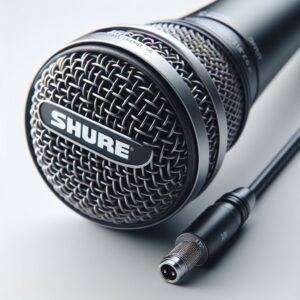
A legendary microphone known for its ruggedness and versatility, the SM57 is a staple in recording studios worldwide, capable of capturing the dynamic range of acoustic guitar performances with ease.
Sennheiser e906: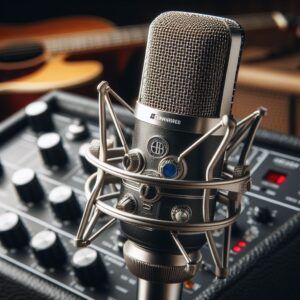
Originally designed for electric guitar amplifiers, the e906 also excels at capturing the transient response of acoustic guitar strings, making it a versatile choice for recording both electric and acoustic instruments.
Beyerdynamic M201TG: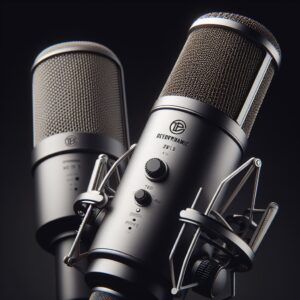
Featuring a hypercardioid polar pattern, the M201TG offers excellent off-axis rejection, allowing it to focus on the direct sound of the acoustic guitar while minimizing unwanted room noise.
Recording Techniques:
Once you’ve selected the right microphone for your acoustic guitar recording, it’s essential to experiment with different recording techniques to achieve the desired sound.
Here are some common techniques used by recording engineers:
Close-Miking:
Position the microphone close to the acoustic guitar’s soundhole or fretboard to capture a direct, intimate sound with minimal room ambiance. This technique emphasizes the instrument’s presence and detail.
Mid-Side (M/S) Stereo:
Combine a cardioid microphone (mid) with a figure-8 microphone (side) to create a stereo image with adjustable width during mixing. This technique offers flexibility in post-production and captures a spacious, natural sound.
X-Y Stereo:
Position two cardioid microphones at a 90-degree angle, aiming towards the acoustic guitar’s body and neck. This technique provides a balanced stereo image with good mono compatibility and minimal phase issues.
Room Mic:
Place a microphone several feet away from the acoustic guitar to capture the room’s natural ambiance. This technique adds depth and dimension to the recording, enhancing the sense of space.
Experimentation is key to finding the right microphone and recording technique for your acoustic guitar recordings. Don’t be afraid to try different combinations and trust your ears to guide you toward the desired sound.
Conclusion:
Recording acoustic guitar is both an art and a science. By understanding the various microphone options and recording techniques available, you can capture the beauty and expressiveness of the instrument with clarity and fidelity.
Whether you’re a beginner or a seasoned recording engineer, exploring the world of acoustic guitar microphones offers endless opportunities for creativity and sonic exploration. So, grab your microphone, experiment with different techniques, and let the music speak for itself.
Feel free to share your thoughts, experiences, or questions in the comments below. Whether you’re a seasoned player or just beginning your musical journey, your insights can inspire and connect with fellow enthusiasts.
==> Create a Test Drive Account at Wealthy Affiliate Now (It’s Free)
w: acousticguitarguru.com
e: mailto:billy@acousticguitarguru.com

